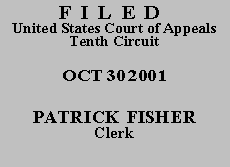

| UNITED STATES OF AMERICA,
Plaintiff-Appellee, v. GILBERTO URCINO-SOTELLO, also known as Raul Ramirez-Tapia, Defendant-Appellant. |
|
Paul M. Warner, United States Attorney, Wayne T. Dance, Assistant United States Attorney, Salt Lake City, Utah, for Plaintiff-Appellee.
Steven B. Killpack and Scott Keith Wilson of Utah Federal Defender's Office, Salt Lake City, Utah, for Defendant-Appellant.
The dilemma I may have is what to do with the additional sentence for the violation of supervised release, and the range is 12 to 18 months, and the Court does not believe that there is a justification in this case to violate the policy statement of the guidelines and impose a sentence that would run concurrently. I believe that my discretion is very limited unless there is some particularly outstanding reason given to have it run concurrently, and I don't hear it.
R., Vol. III at 12. The district court sentenced defendant to twenty-one months in prison and thirty-six months of supervised release on the substantive offense and twelve months in prison on the supervised release violation, and ordered the two sentences to run consecutively.
On appeal, defendant contends that the district court erred in concluding that its discretion to impose a concurrent sentence for the substantive offense and a supervised release violation based upon the same conduct was limited. "We review the district court's legal interpretation and application of the sentencing guidelines de novo." United States v. Henry, 164 F.3d 1304, 1310 (10th Cir. 1999).
A district court generally has broad discretion to order concurrent or consecutive sentences when multiple terms of imprisonment are imposed on a defendant at the same time. 18 U.S.C. § 3584(a); United States v. Contreras, 210 F.3d 1151, 1152 (10th Cir. 2000). The policy statements concerning sentencing for supervised release violations contained in Chapter 7 of the guidelines are advisory only and do not limit a district court's discretion to impose sentence. See USSG Ch. 7, Pt. A; see, e.g., United States v. Burdex, 100 F.3d 882, 884 (10th Cir. 1996). The district court, however, was required to consider the factors listed in 18 U.S.C. § 3553(a) before it imposed a concurrent or consecutive sentence, see § 3584(b), and was not free to disregard the policy statements in the guidelines, see § 3553(a)(4)(B), (b). Rather, defendant had the burden to come forward with a reason upon which the district court could exercise its discretion to impose concurrent sentences in spite of § 7B1.3(f).
The district court was mistaken in stating that its discretion to impose concurrent or consecutive sentences was "very limited." R., Vol. III at 12. But it is clear from the court's language that it knew that it had discretion to impose concurrent sentences, assuming a sufficient reason was advanced by the defendant. The district court made a finding in this regard: "I don't hear it." Id.
The government's motion to dismiss for lack of jurisdiction is denied as moot. Its motion to supplement the record on appeal is granted. The judgment of the United States District Court for the District of Utah is AFFIRMED.
1. After examining the briefs and appellate record, this panel has determined unanimously to grant the parties' request for a decision on the briefs without oral argument. See Fed. R. App. P. 34(f); 10th Cir. R. 34.1(G). The case is therefore ordered submitted without oral argument.